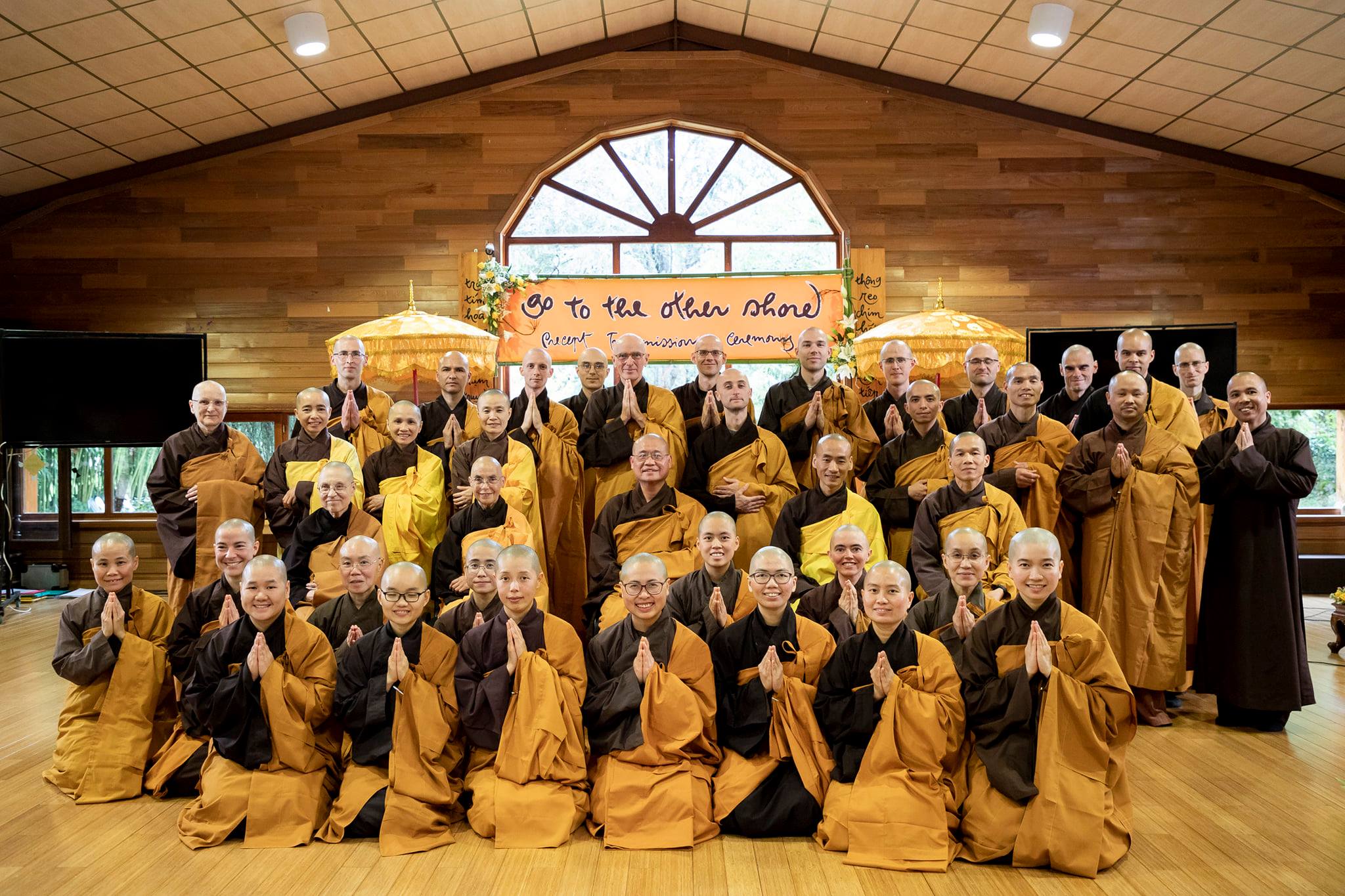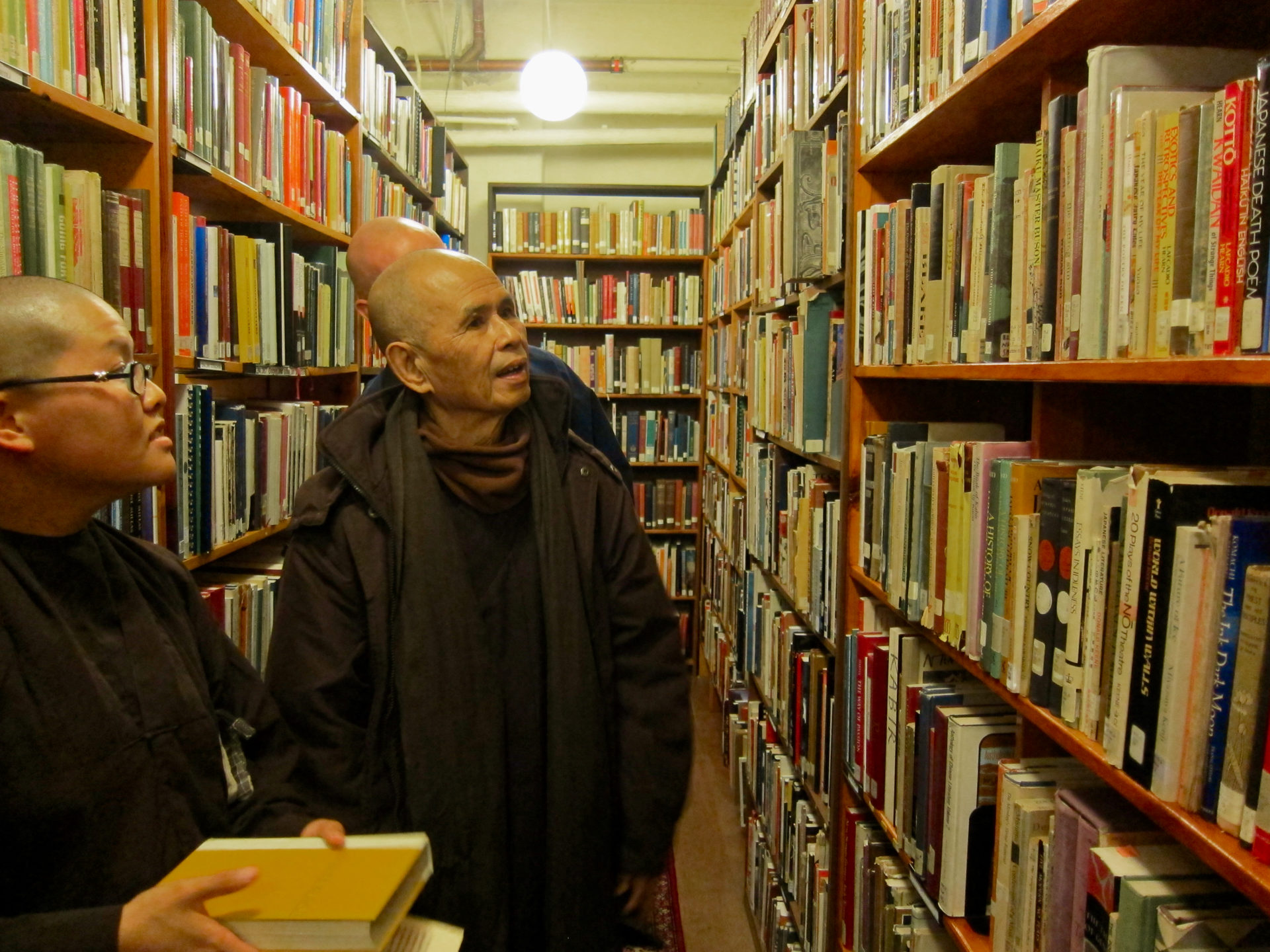The Deeper Meaning Behind Monastic Rules
eing a nun or a monk involves committing to a large number of guidelines. Thich Nhat Hanh explains the deeper purpose behind these precepts.

Being a nun or a monk involves committing to a large number of guidelines. Thich Nhat Hanh explains the deeper purpose behind these precepts.

The following edited excerpt is taken from the book by our teacher, Thich Nhat Hanh, titled ‘Freedom Wherever We Go: A Buddhist Monastic Code for the 21st Century’. While this book was written primarily for monastics, much of the spirit behind keeping the precepts (or Mindfulness Trainings) can be helpful to anyone wanting to lead an ethical life.
The basis of Mindfulness Trainings
When I was a young monk, I learned that the three essential trainings of a practitioner are precepts, concentration, and insight. In the Vinaya, the collection of rules and regulations for monastics, it is taught that the precepts lead to concentration, concentration leads to insight, and insight leads you to realize the path. Although I learned this, I could not really accept what the elder monks taught me. I had been told that before the Buddha passed into Nirvana he said, “Please look at the Vinaya as your teacher.” I did not dare oppose this. I did not dare say, “How is this possible?” But I did not really believe it. I saw the precepts as preventing us from doing something wrong and I thought, how could the Buddha just be someone who prevents us from doing things?
If the basis of precepts is not mindfulness, they are not authentic precepts.
One day, I recognized that, in the teachings of the Noble Eightfold Path and the teachings of the Five Powers, concentration and insight are always preceded by mindfulness. The Five Powers are faith, diligence, mindfulness, concentration, and insight. Faith has an energy which leads to diligence and diligence leads to the power of mindfulness. The power of mindfulness leads to the power of concentration which in turn leads to the power of insight.
Comparing the Vinaya with the Noble Eightfold Path, I discovered that precepts are mindfulness. This was a very important discovery in my life. The ancestral teachers and my own teachers had not taught me this directly; maybe they realized it but they had not actually said it. If the basis of precepts is not mindfulness, they are not authentic precepts, we cannot only accept someone else’s experience and insight regarding the practice of the precepts. We must taste it for ourselves. We must have our own experience of the precepts to fully understand their essence.
Practicing the Substance of the Trainings
The Buddha taught that we have a tendency to get caught in five kinds of wrong views.The fifth kind of wrong view is being caught in the outer form of rites and rituals. We think that if we avoid doing what is forbidden and follow all rules and regulations, we will be liberated. We are content to follow rules and perform rituals without understanding their significance.
When we are caught in rituals, we can also be caught in the various rules and regulations which are attached to these rites and rituals. When studying the precepts and putting them into practice we need to be careful not to fall into the fifth kind of wrong view, by being caught in the outer form of practicing the precepts.
The basis of meaningful rules or regulations must be mindfulness, wisdom, and understanding.
If we keep the precepts but are caught in their outer form and do not understand their deeper meaning, our practice cannot lead to liberation, purity, peace, and joy. For example, we may think that the more we invoke the Buddha’s name, the more holy and pure we will become. Yet if we invoke the Buddha’s name without mindfulness and concentration, it will not bring us any benefit. We can repeat the Buddha’s name thousands of times a day but if we are still carried away by our irritation or unhappiness while we practice then we are caught in the outer form. Or suppose we eat a vegetarian diet but we do not enjoy it. It makes us suffer and we always think of how nice it would be to eat meat. This is being caught in the form. We do not touch the essence of the practice of protecting life, of not harming living beings. When we practice the content, the essence of the precepts, we receive the benefit of peace, clarity, and freedom right away.
The basis of meaningful rules or regulations must be mindfulness, wisdom, and understanding. The reason I do not eat the flesh of living beings is because I do not want to harm my heart of compassion. I am not vegetarian because I believe it will bring me a lot of merit in the future. If I am practicing the substance of the precepts, when I eat a vegetarian meal, I feel happy and peaceful. I don’t even realize that I am eating a vegetarian meal. I just feel content; I don’t suffer at all. I simply enjoy that I am not eating the flesh of living beings. This happiness is based on mindfulness. I am mindful that when I eat meat, other beings must suffer and I myself suffer. Mindfulness is the real spirit of the precepts.
 Plum Village Nuns and Monks after receiving their full Bikkshu and Bikkshuni precepts.
Plum Village Nuns and Monks after receiving their full Bikkshu and Bikkshuni precepts.The Three Dimensions of a Mindfulness Training
There are three dimensions which we should also look for in each precept. Each dimension adds depth and breadth to our practice of the precepts.
The first dimension is refraining from negative action. This is called samvara sila in Sanskrit. “Samvara” means to keep, not to break and “sila” means precepts. Refraining means we are determined not to do something. We stop. When we refrain from doing a negative action, we conserve something. You hold your alms bowl so that it does not fall down and break. You also hold your precepts like that.
We should not do something even if we feel pushed to do it. We have to hold ourselves, to prevent ourselves from doing this negative action. Action here refers to the three actions of body, speech, and mind: in other words, physical actions, speech, and thoughts.
The second dimension is performing, doing positive action. This is called kushaladharma sila. “Kushala” means good in Sanskrit, “dharma” means things.
In the case of positive or wholesome action, refraining leads to breaking and performing leads to holding or keeping. If you see someone fall down and hurt himself and you do nothing, you break the precepts. If a person needs us and may fall into a difficult situation without our help, we break the precepts if we don’t reach out to help that person. If we have the opportunity to rescue an animal and we do not do it, then we break the precepts. If we see anyone being abused and we just sit there in meditation, not taking any notice, we break the precepts. We may think, “It is not my business, why should I tire myself intervening?” We have to intervene in these cases in order to stop what is going on.
We have to do what is needed to be done. We see someone dying of hunger, but we hesitate; we see someone drowning and we hesitate, saying, “Oh, it’s cold.” We have to jump down and help that person. We have to find a way to offer that hungry person food. There is a law now in France that if you are sitting on the bus or the subway and you see someone beating or killing another person and you do nothing, then you are breaking the law. When you see something happening that should not be happening, something unjust, then you have to intervene. Nonintervention is refraining when you should take action. In some countries we are legally required to seek help when we see others suffer. How much more so, as practitioners, should we reach out to help and prevent danger and suffering to others around us.
This is the spirit of the Vinaya. In it there is the way of the bodhisattva, the awakened person who is animated by compassion.
The third dimension is doing something to benefit living beings. It is called sattvarthakriya sila. “Sattva” means living beings and “arth” means to benefit. “Kriya” means group, collection or set. If nothing negative is happening in the present moment, it is not necessary to intervene to help. Yet we must still have the heart of compassion. Perhaps we know that in this present moment there is no urgent situation in which we need to intervene to put an end to suffering. But still, we are aware that in the world there are so many living beings imprisoned and suffering – in Iraq, in the Middle East, in Africa, or right in our own community or city. There are children dying of hunger who have had nothing to eat for days. Sitting here, our compassion wakes us up. Simply enjoying our peaceful situation, we do not feel happy; we do not feel at ease. We want to do something to alleviate the suffering in the world. There is not an urgent need immediately around us, but we know that there are situations in the world that need our help. We can reach out our hands very far to help. We have to do something good, not because if we don’t do it we will be put in prison, but because we really want to do it. We have a good heart and we want to help.
This is the spirit of the Vinaya. In it there is the way of the bodhisattva, the awakened person who is animated by compassion. If we think that the precepts are only there to tell us what we should not do, our perspective is not large enough.
Telling us not to do things is only one part of the precepts. The bodhisattva ideal to help others means that the precepts must have another aspect. Not killing is good already, but it is not enough—you also have to protect life, you have to make life beautiful and worth living. To fully practice the precepts you have to practice refraining from unwholesome action, performing wholesome action, and making the world better for all living beings.
The Interbeing of the Three Dimensions
Within each dimension we can identify the other two dimensions. We do not kill and at the same moment we are protecting life. We protect life and at the same time we are protecting and supporting future generations, we are nourishing the heart and mind of love in ourselves and in others. The three dimensions inter-are with each other. We should continue to integrate these three dimensions into the precepts so that those who study and practice the precepts can touch these dimensions, and our practice of the precepts can remain fresh and alive.

 Lynk
Lynk 
































